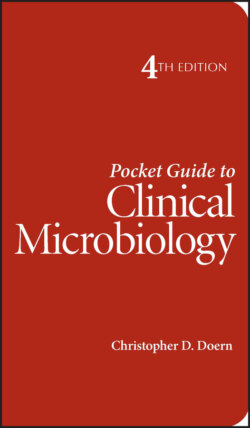Читать книгу Pocket Guide to Clinical Microbiology - Christopher D. Doern - Страница 16
Taxonomic Classification of Fungi
ОглавлениеThe taxonomic classification of fungal organisms is complex because fungi can be classified by different methods. The phylogentic taxonomy for fungi is represented in this chapter and is subject to the International Code of Nomenclature (ICN) for algae, fungi, and plants (http://www.iapt-taxon.org). This organization was formally known as the International Code of Botanical Nomenclature (ICBN).
Fungi are divided into four divisions (phylum or subphylum): Mucormycotina, Entomophthoromycotina, Ascomycota, and Basidiomycota. The Protozoa and Chromista kingdoms include some members that possess a fungus-like appearance and are clinically relevant, such as Rhinosporidium and Pythium.
The taxonomy of fungal classification is arranged in the following way…
PhylumSubphylumClassOrderFamilyGenusSpecies
Since the last writing of this Pocket Guide, a significant change has occurred in the world of fungal taxonomy. As of January 1, 2013, only one name will be used to identify fungi, and the “correct” name will be that which was first identified. Why has this occurred? Most scientists agree that the convention of having multiple names for fungi to represent the differing states of a fungus is no longer necessary with the use of DNA sequence analyses. The multi-name convention is confusing, and is especially so for the clinical microbiologist who is trying to communicate understandable and actionable information to those caring for patients.
Because fungal taxonomic naming conventions are changing more quickly than for bacteria, parasites, and viruses, publishing an extensive list of fungal taxonomy would be rendered inaccurate as soon as this Pocket Guide was published. In fact, many of the names that would be included as of the writing of this book will likely cease to exist.
